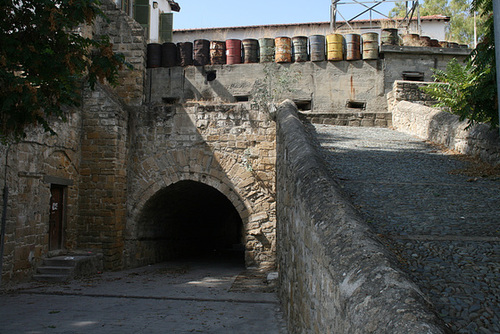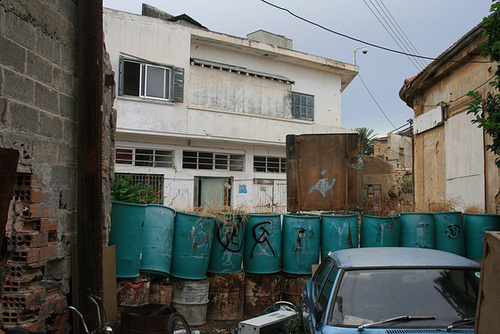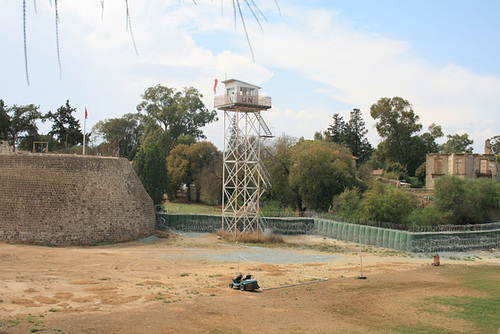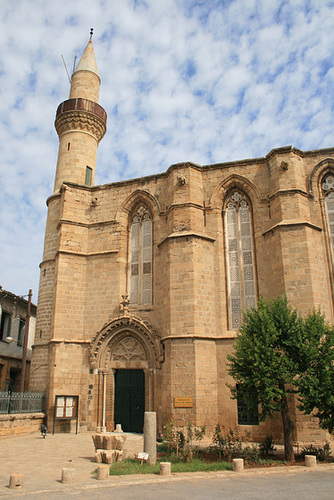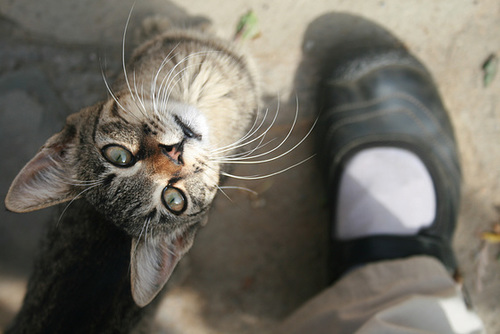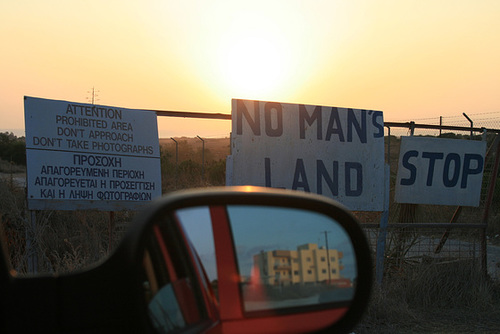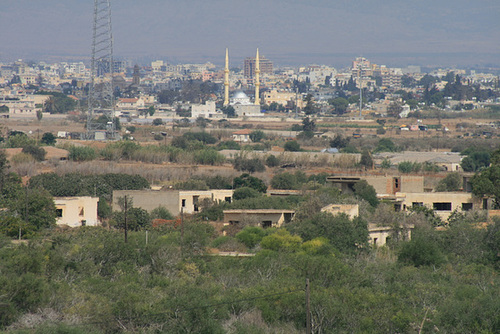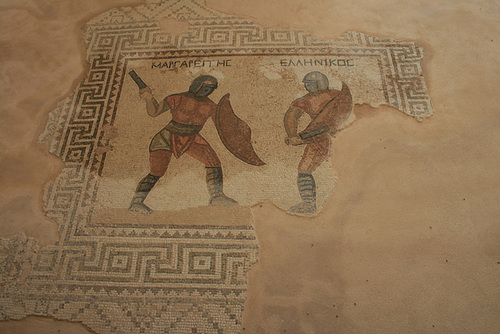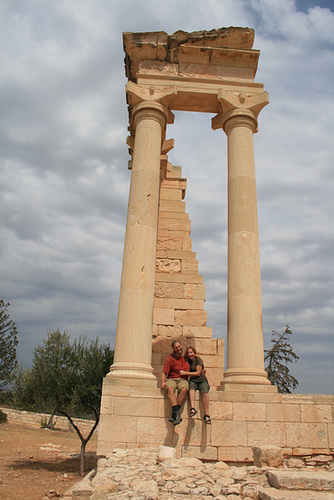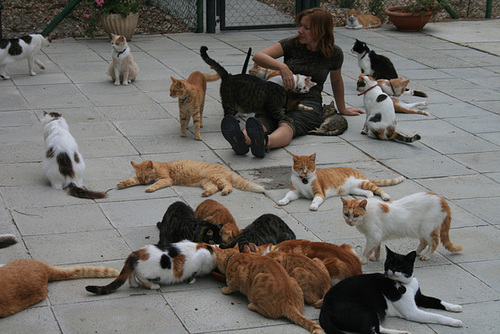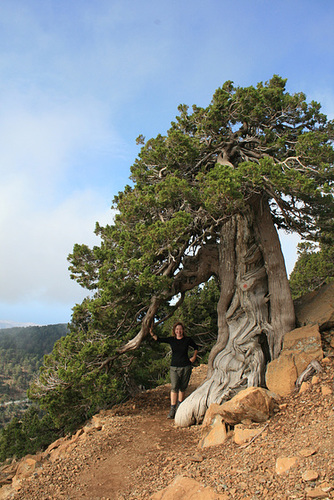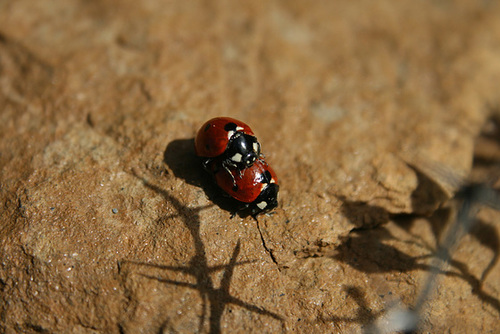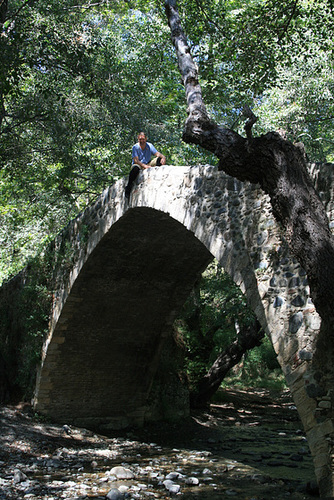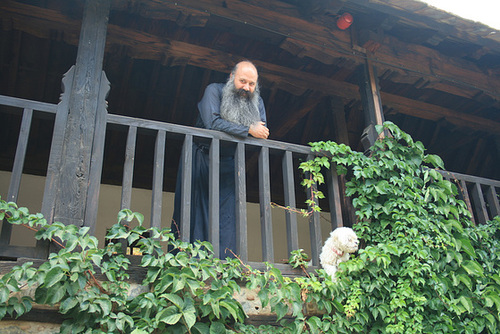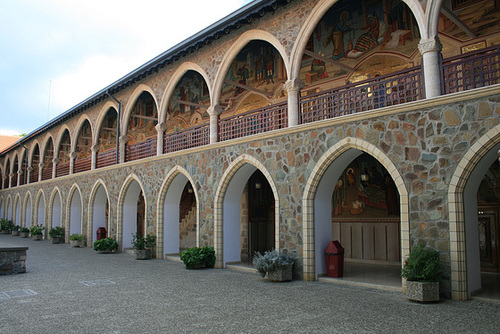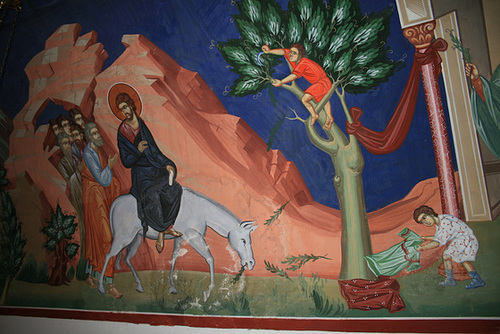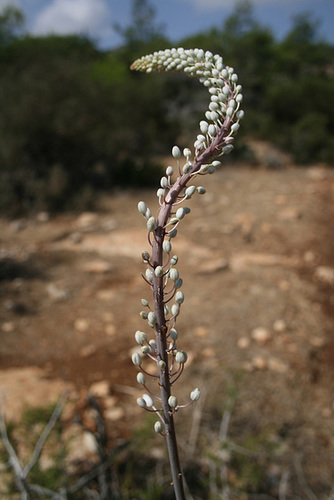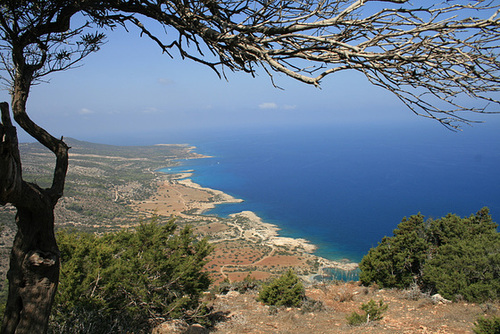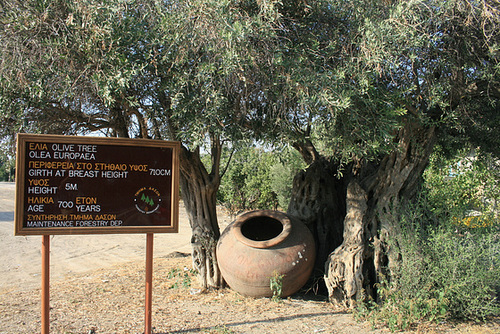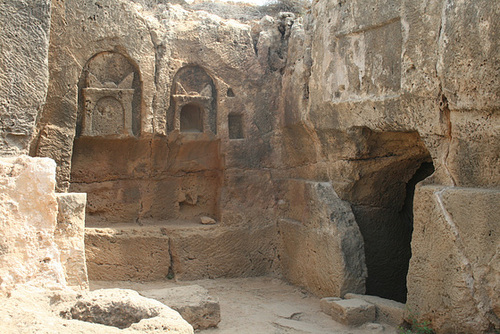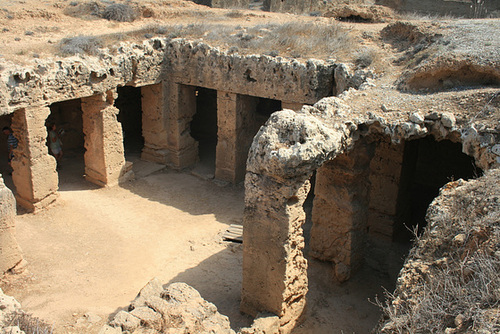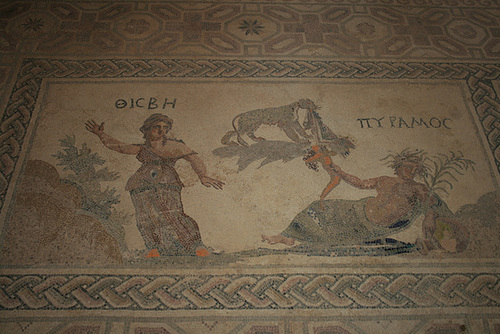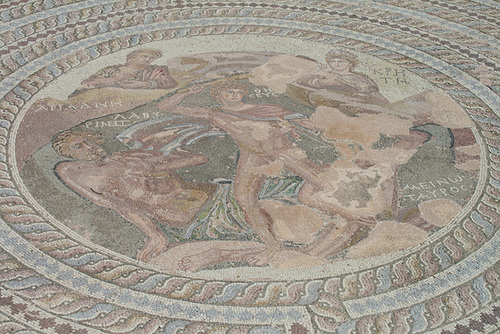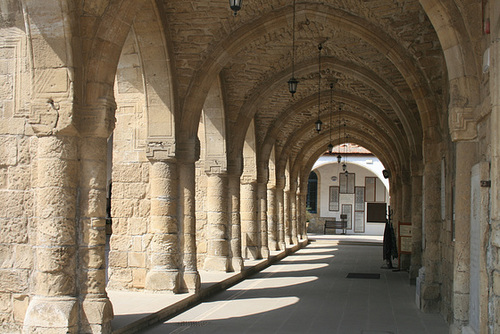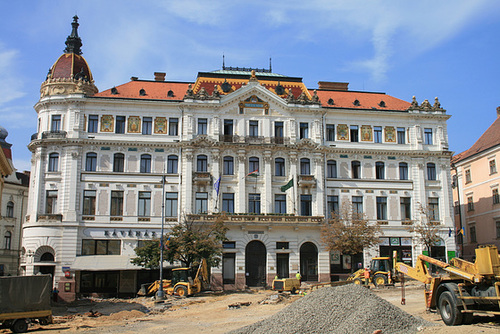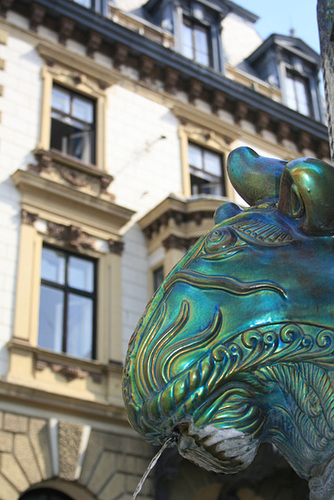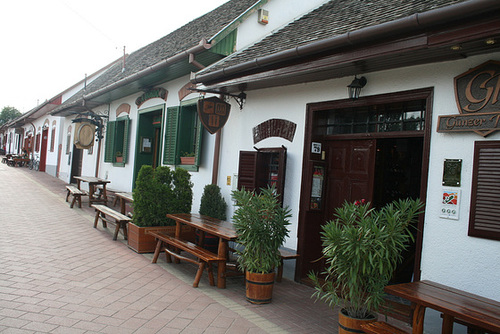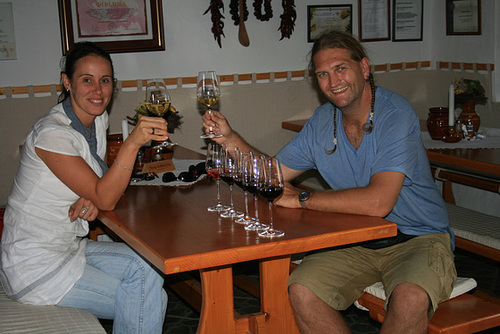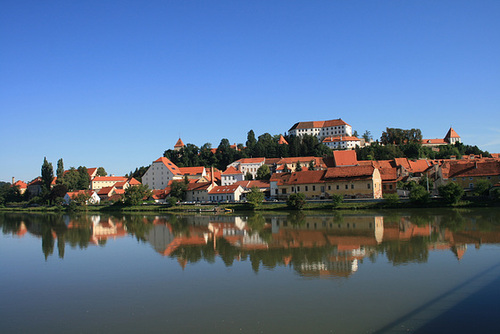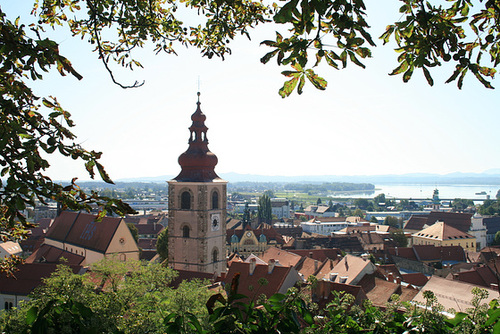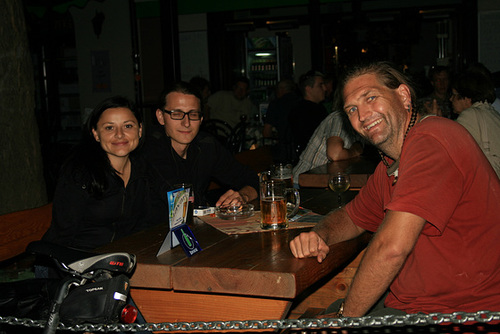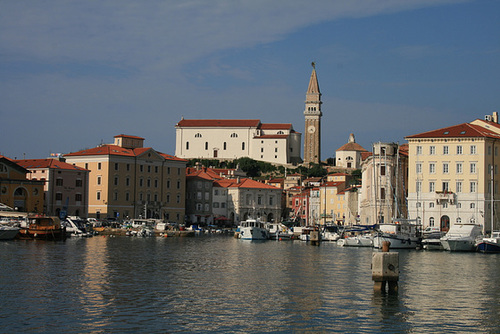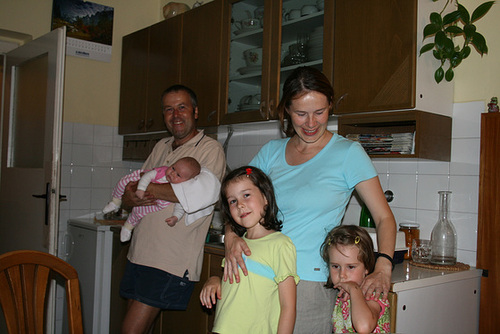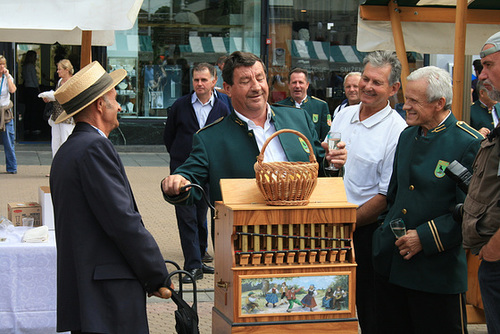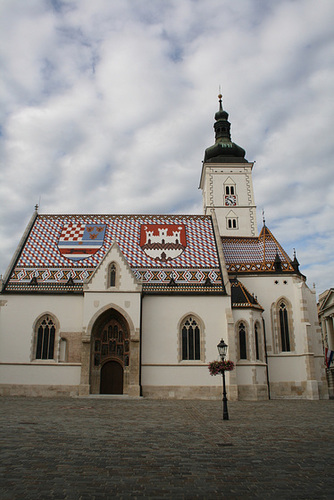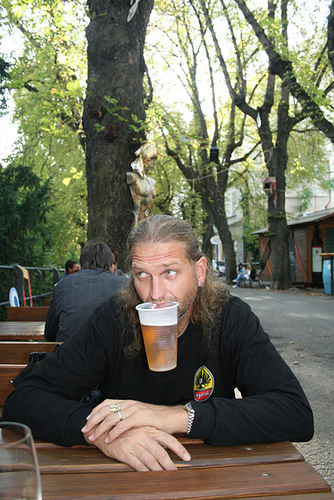20 to 25 September, 2009 – Kyrenia and the Karpas Pennsula, Northern Cyprus
It is very hard to make references to the north without sounding political, particularly when it comes to place names. So once again, apologies if we say something which sounds like we are making assumptions about right and wrong for Cyprus – we really are not in a position to make conclusions or implications.
Our first base for the north was Kyrenia, also known as Girne. From here we were able to explore the northern mountains known as the Kyrenia Range, and the castle ruins this range holds. A magnificent trio of castles.
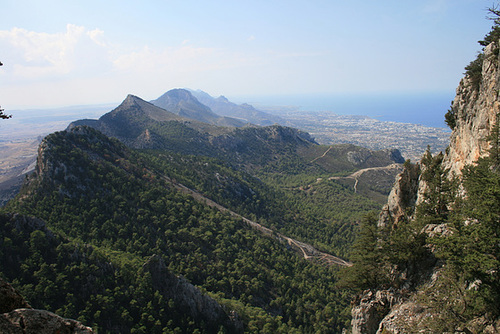
A View in North Cyprus
Taken from a castle called Buffavento. The city visible down by the coast is Kyrenia. Buffavento was one of three castles in the mountain ridge known as the Kyrenia Range along Cyprus' north. The three castles were built in line of sight of each other, allowing them to send warnings with beacon fires. This one required a bit of effort to reach, being a 30 minute steady climb in the sun from the car park. Little fortification was required as the natural rock provided considerable protection already.

Same Place, Different View
This photo is also taken from Buffavento Castle. This is looking to the south of the Kyrenia Range, over the plain of the Mesarya. It is quite a contrast from the north view in the other photo. Visible here is one of the castle's lower structures.
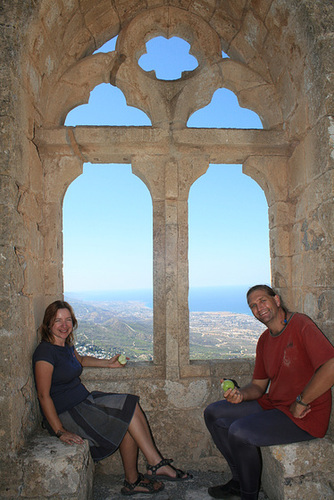
Snacking At St Hilarion Castle
In anticipation of a big late lunch, we had a light early snack. So healthy, hey, with our fruit. We found this cute little perch in the royal quarters of St Hilarion Castle. This is another of the three castles that I referred to earlier. A bit of climbing was required for this one, too.

St Hilarion At Night
Viewed from our rooftop terrace in Kyrenia, you can make out the castle structures of St Hilarion on the rocky peak. The moon completes the picture.
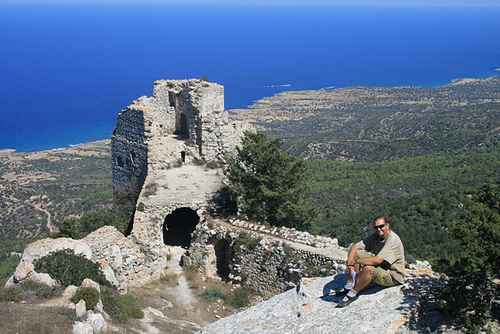
Kantara Castle
This is the the view from the third castle, Kantara, in the Kyrenia Range.
Kyrenia was also a great place to stay as it has a picturesque old town and harbour, along with its own incredible castle.
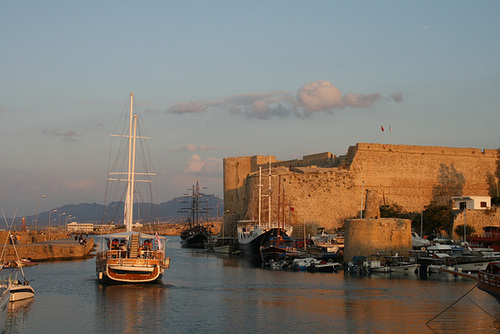
Dusk At Kyrenia Harbour
The massive walls of Kyrenia Castle create a beautiful backdrop to the tiny harbour. The very late sun throws a nice glow over the scene.
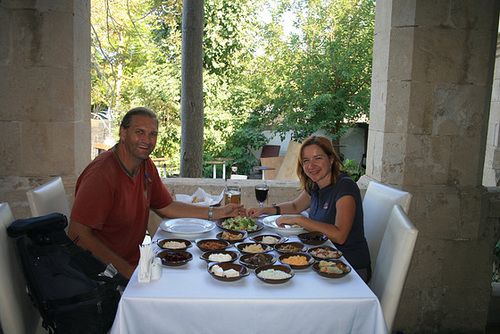
And This Was Just Entrée
This was the start of the big late lunch I referred to. This shows the dips and salads. Soon, we were to start receiving the meats and hot dishes. This meze had about 25 different dishes! No dinner needed that night.
We headed in to the wild eastern peninsula of the country. Great beaches, and a few other sights worth a visit. Nice people, too!
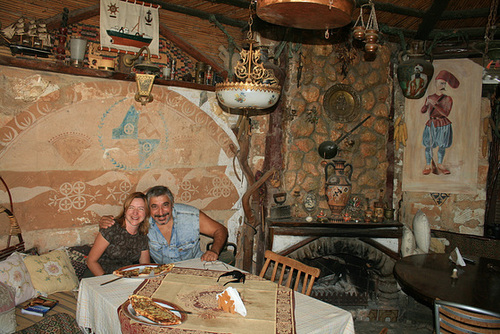
Jo and Tayfun
Fantastic and generous restaurateur, Tayfun. This is his self decorated place in the village of Yenierenköy. After getting us in to his place with a good deal and a great atmosphere, he thrust a bunch of freebies on to us, too. Coffee, which is not an unusual “extra”, but also a bag of fruit from his own garden – pears and enough grapes to sink a ship.
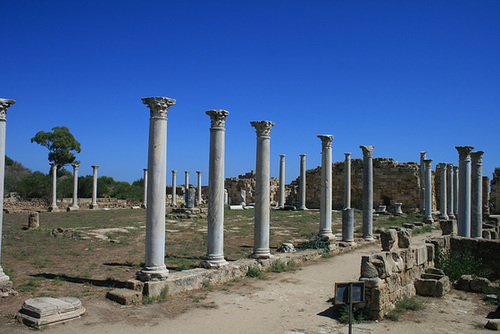
Columns at Ancient Salamis
Ruins of one of Cyprus' city kingdoms, Salamis.
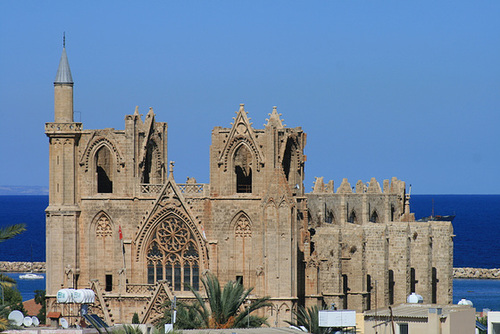
Looking Across Famagusta
Modelled on the cathedral of Reims (Rheims), France, this used to be the Cathedral of Agios Nikolaos. In 1571, the towers were severely damaged during an Ottoman siege, and after Famagusta fell, the conquering Ottomans stripped the inside and added a minaret. Since then, it has been the Lala Mustafa Paşa Mosque.
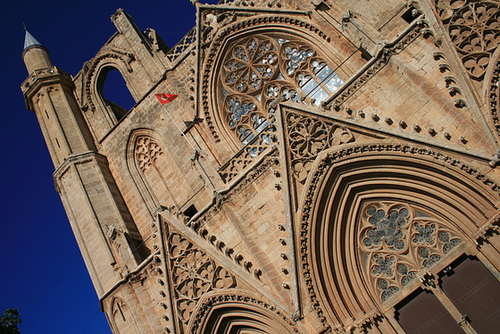
Western Facade Of Cathedral And Minaret
Gothic features of the once-upon-a-time-it-was Cathedral of Agios Nikolaos, Famagusta, modelled on the cathedral of Reims (Rheims) in France. The added minaret (when it was converted in to the Lala Mustafa Paşa Mosque) does not blend in all that well.
An odd road sign from on the way.

Please Drive Slower If Your Car Is Exploding...
A “not so obvious” sign from Northern Cyprus. Our interpretation was that cars have one speed limit, trucks and heavy vehicles another, and cars that are on fire or are exploding should drive slower again.
We did return to Kyrenia, to go wandering up a nearby turtle beach in the hope of seeing a late hatchling or two, but it is very late in the season, and the volunteers did express that they were not holding much hope for the remaining nests to produce live young.
And then, through Lefkosia and back to the south. On the way, I decided to get our own photo of the map of Lefkosia to show the shape of the walls, so here it is:
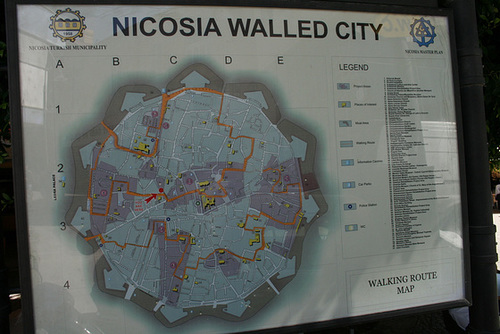
Map Of Lefkosia (Nicosia)
This map shows the walled town section of Lefkosia (Nicosia) leaving out the north/south division. It is a good map to show the shape of the Venetian built medieval walls – sort of like a snow flake, or a cross section of plant on a microscope slide.
It is very hard to make references to the north without sounding political, particularly when it comes to place names. So once again, apologies if we say something which sounds like we are making assumptions about right and wrong for Cyprus – we really are not in a position to make conclusions or implications.
Our first base for the north was Kyrenia, also known as Girne. From here we were able to explore the northern mountains known as the Kyrenia Range, and the castle ruins this range holds. A magnificent trio of castles.

A View in North Cyprus
Taken from a castle called Buffavento. The city visible down by the coast is Kyrenia. Buffavento was one of three castles in the mountain ridge known as the Kyrenia Range along Cyprus' north. The three castles were built in line of sight of each other, allowing them to send warnings with beacon fires. This one required a bit of effort to reach, being a 30 minute steady climb in the sun from the car park. Little fortification was required as the natural rock provided considerable protection already.

Same Place, Different View
This photo is also taken from Buffavento Castle. This is looking to the south of the Kyrenia Range, over the plain of the Mesarya. It is quite a contrast from the north view in the other photo. Visible here is one of the castle's lower structures.

Snacking At St Hilarion Castle
In anticipation of a big late lunch, we had a light early snack. So healthy, hey, with our fruit. We found this cute little perch in the royal quarters of St Hilarion Castle. This is another of the three castles that I referred to earlier. A bit of climbing was required for this one, too.

St Hilarion At Night
Viewed from our rooftop terrace in Kyrenia, you can make out the castle structures of St Hilarion on the rocky peak. The moon completes the picture.

Kantara Castle
This is the the view from the third castle, Kantara, in the Kyrenia Range.
Kyrenia was also a great place to stay as it has a picturesque old town and harbour, along with its own incredible castle.

Dusk At Kyrenia Harbour
The massive walls of Kyrenia Castle create a beautiful backdrop to the tiny harbour. The very late sun throws a nice glow over the scene.

And This Was Just Entrée
This was the start of the big late lunch I referred to. This shows the dips and salads. Soon, we were to start receiving the meats and hot dishes. This meze had about 25 different dishes! No dinner needed that night.
We headed in to the wild eastern peninsula of the country. Great beaches, and a few other sights worth a visit. Nice people, too!

Jo and Tayfun
Fantastic and generous restaurateur, Tayfun. This is his self decorated place in the village of Yenierenköy. After getting us in to his place with a good deal and a great atmosphere, he thrust a bunch of freebies on to us, too. Coffee, which is not an unusual “extra”, but also a bag of fruit from his own garden – pears and enough grapes to sink a ship.

Columns at Ancient Salamis
Ruins of one of Cyprus' city kingdoms, Salamis.

Looking Across Famagusta
Modelled on the cathedral of Reims (Rheims), France, this used to be the Cathedral of Agios Nikolaos. In 1571, the towers were severely damaged during an Ottoman siege, and after Famagusta fell, the conquering Ottomans stripped the inside and added a minaret. Since then, it has been the Lala Mustafa Paşa Mosque.

Western Facade Of Cathedral And Minaret
Gothic features of the once-upon-a-time-it-was Cathedral of Agios Nikolaos, Famagusta, modelled on the cathedral of Reims (Rheims) in France. The added minaret (when it was converted in to the Lala Mustafa Paşa Mosque) does not blend in all that well.
An odd road sign from on the way.

Please Drive Slower If Your Car Is Exploding...
A “not so obvious” sign from Northern Cyprus. Our interpretation was that cars have one speed limit, trucks and heavy vehicles another, and cars that are on fire or are exploding should drive slower again.
We did return to Kyrenia, to go wandering up a nearby turtle beach in the hope of seeing a late hatchling or two, but it is very late in the season, and the volunteers did express that they were not holding much hope for the remaining nests to produce live young.
And then, through Lefkosia and back to the south. On the way, I decided to get our own photo of the map of Lefkosia to show the shape of the walls, so here it is:

Map Of Lefkosia (Nicosia)
This map shows the walled town section of Lefkosia (Nicosia) leaving out the north/south division. It is a good map to show the shape of the Venetian built medieval walls – sort of like a snow flake, or a cross section of plant on a microscope slide.
